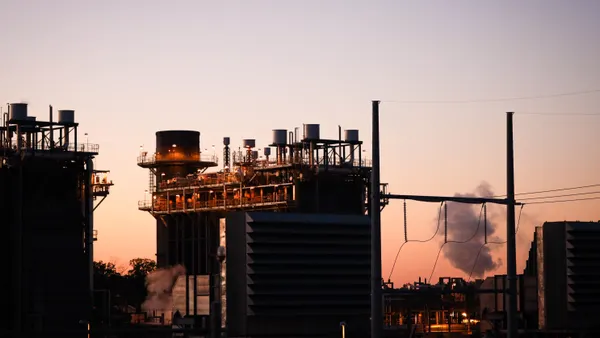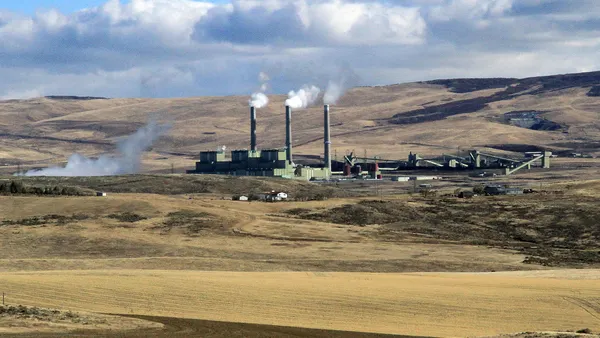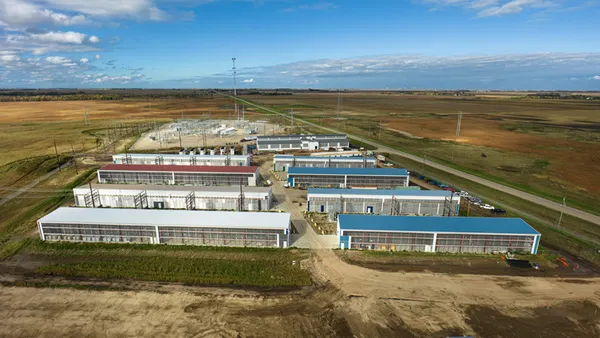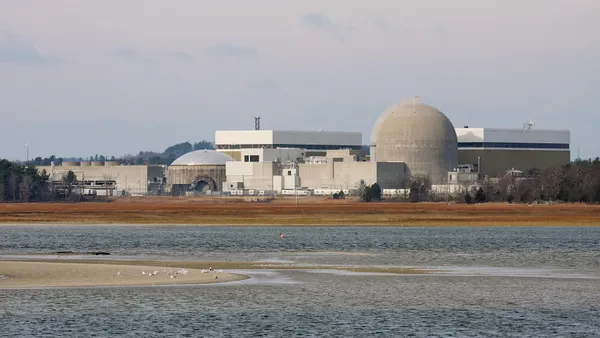Dive Brief:
- The U.S. Department of Energy on Friday unveiled plans to spend $20 million on research into the production of clean hydrogen from nuclear power.
- The money will help pay for a demonstration project by PNW Hydrogen at the Palo Verde Nuclear Generating Station in Phoenix.
- DOE’s funding announcement comes amid growing interest by the Biden administration and the utility sector in the potential large-scale use of clean hydrogen to reduce carbon emissions.
Dive Insight:
The rollout of the Arizona project is part of the DOE's H2@Scale initiative, which looks to spur research into clean hydrogen and its potential use not just in the utility industry, but across a range of sectors.
To that end, DOE has launched a "Hydrogen Shot" initiative to reduce the price of clean hydrogen over the next decade to $1 per kilogram.
For comparison, hydrogen created by using renewables to electrolyse water currently costs three to five times that amount, from $3/kg-$6.55/kg, according to S&P Global Market Intelligence.
While the United States currently produces 10 million metric tons of hydrogen each year, most of it is still made through the use of natural gas, though clean alternatives "are rapidly increasing," according to DOE.
PNW Hydrogen will lead the project, with DOE’s Office of Nuclear Energy contributing $8 million to the venture, while DOE’s Hydrogen and Fuel Cell Technologies Office will provide another $12 million for a total of $20 million.
"Using nuclear power to create hydrogen energy is an illustration of DOE’s commitment to funding a full range of innovative pathways to create affordable, clean hydrogen, to meet DOE’s Hydrogen Shot goal, and to advance our transition to a carbon-free future," said Deputy Secretary of Energy David Turk, in a press release.
The plan calls for using six tonnes of clean hydrogen to generate 200 MWh of electricity at periods of high demand, with the hydrogen also potentially being used to produce other fuels and chemicals.
The aim of the project is to learn more about "integrating nuclear energy with hydrogen production technologies" that in turn will help with deploying "future clean hydrogen production deployments at scale," according to DOE.
"Nuclear produced hydrogen can either be used as fuel for generators based on combustion or sold for industrial purposes," Amy Roma, a partner in the regulatory practice of Hogan Lovells, said in a blog post.
The steady nature of nuclear-produced hydrogen can also offset the variable and weather-dependent nature of renewable sources like wind and solar, Roma wrote.
"The operational flexibility and reliability enable nuclear plants to respond to seasonal demand shifts, hourly market pricing changes, and make a nuclear hydrogen combination appealing," Roma states.
The Arizona project drew praise from home state Sen. Kyrsten Sinema (D).
Sinema noted the $1 trillion bipartisan infrastructure plan includes $9.5 billion to help build up a clean hydrogen sector through "national clean hydrogen hubs, hydrogen manufacturing and recycling programs, and programs to lower the cost of clean hydrogen."
CORRECTION: A previous version of this story misidentified the type of hydrogen created in this initiative.












